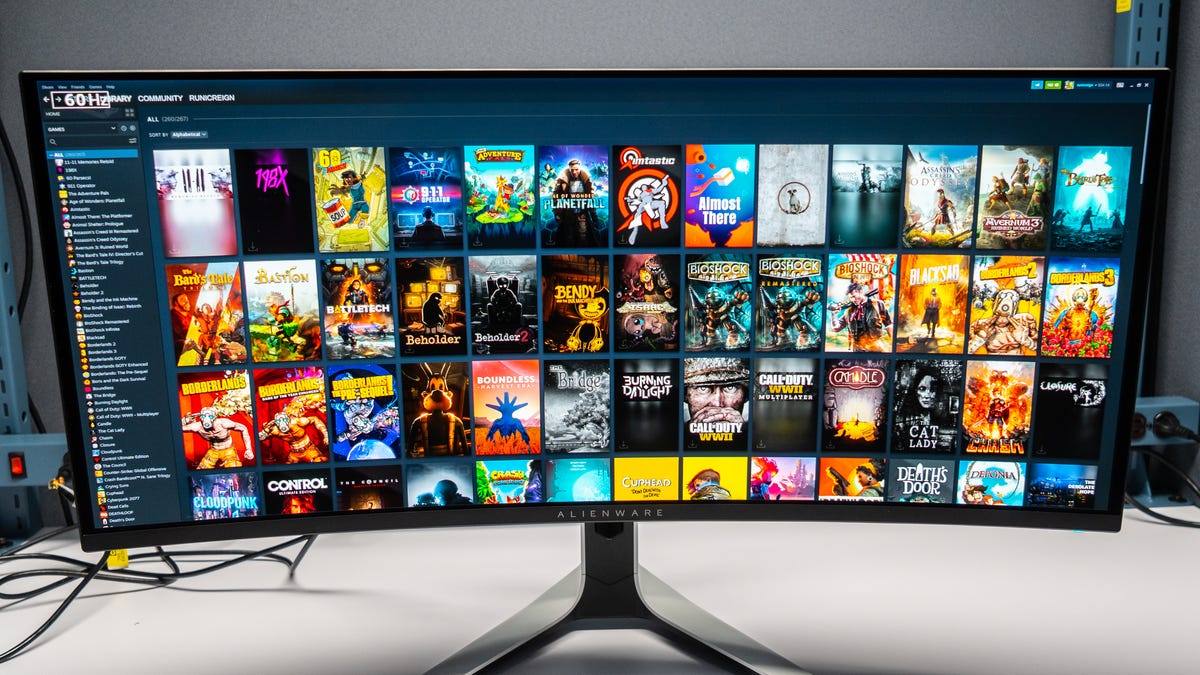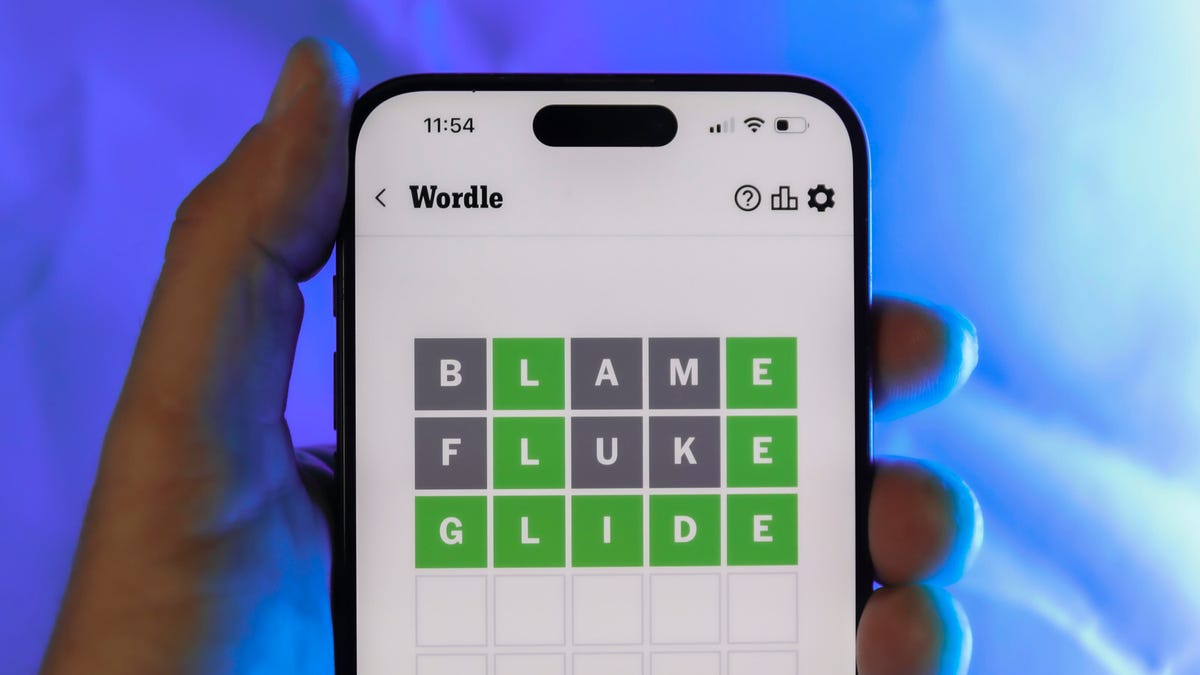Technologies
How CNET Tests Monitors
The method behind our monitor-review madness.

Monitor testing and evaluation consists of formal and subjective quality tests and hands-on assessment of the display’s design and features — connection selection and location, menus and options and overall behavior. As part of the process we use the monitor for tasks specific to its mission, such as everyday productivity, video streaming, image and video editing or different types of gaming (such as FPS or RPG). Note that we only report a fraction of our results, usually what’s necessary to adequately convey a monitor’s strengths and weaknesses for particular uses.
The process begins with unboxing and setup; it’s connected to our Windows-based desktop testbed (or a relatively high-end Mac in cases that require it) equipped with a current-generation Intel Core i9 and high-end Nvidia GeForce graphics card. Both the computer and monitor are plugged directly into a wall outlet to prevent any power issues that might impact performance.
We generally prefer to use our cables rather than the manufacturer-supplied ones since they’re a known quantity and tend to be higher quality; if we run into any issues, we double check using the manufacturer’s cables. DisplayPort is our primary connection for testing. If the monitor specifies any console-specific capabilities, we connect it to the relevant console(s), Xbox Series X and/or PS5 via HDMI.
Before any testing begins, we photograph the default settings and all menu options for reference and to determine the complete set of tests we’ll need to run on that particular monitor given its specific capabilities; how extensively we test depends on the capabilities of the monitor, the screen and backlight technology used, and the judgment of the reviewer. We disable power-saving measures where relevant, which can affect brightness and related measures (the option is mandatory per California law). We use a subset of these tests to evaluation laptop displays and run them both plugged into a wall outlet and on battery using the default profile but with screen timeouts disabled.
We also record any relevant information about the panel — manufacturer specs for resolution, color gamut and profiles, refresh rates and so on — that may impact our evaluation against manufacturer’s claims. While we review a display with the company’s publicly expressed target market in mind, we also consider the monitor’s suitability for other uses that might apply.Wherever possible, we download drivers and color profiles specific to the monitor.
What we measure
All measurements are performed using the most recent version of Portrait Display’s Calman Ultimate software using an X-Rite i1Display Pro Plus (rebranded as Calibrite ColorChecker Display Plus) and a variety of included patch sets, with additional HDR testing using a Murideo Six-G pattern generator and or the Client3 HDR patterns within Calman. We periodically spot check the colorimeter’s accuracy against the Konica Minolta CS-2000 spectroradiometer used for our TV testing.
Our test lab is equipped with blackout curtains to fully block ambient light, though complete darkness isn’t essential since the colorimeter sits directly on the screen and isn’t affected by dim lighting. The room has natural light and various artificial sources for normal usage evaluation.
Color accuracy results are reported in units of Delta E 2000. We perform most of the tests (where we know results vary) at both 100% and default hardware brightness levels.
Core tests — those we run on every display, regardless of intent or price — include:
- White point, brightness (peak and minimum), contrast and gamma for sRGB and the native color space measured across 21 gray patches (0-100%), reported rounded down to the nearest 50K as long as there are no big variations. A variation of plus or minus 200K around the target color temperature is considered acceptable for all but the most color-critical displays.
- Color gamut coverage and accuracy for sRGB and the native color space using Calman’s standard Pantone patch set plus grayscale and skin tone patches.
- We add Blur Busters‘ motion tests for gaming monitors to judge motion artifacts (such as ghosting) or refresh rate-related problems.
If a monitor has menu options beyond the basics, we run the same core tests for the following settings when available:
- All color presets
- All gaming presets (such as FPS). We also test brightness for pixel overdrive and motion-blur reduction modes (which tend to lower brightness considerably).
- Gamma for at least 1.8, 2.2 and 2.6
- Color temperatures for at least 5000K, 6300K, 6500K and 9300K
For HDR, we add testing for HDR-specific presets (such as Game HDR or Cinema HDR) and brightness for window sizes of 1%, 5%, 10% and 100% of the screen.
Finally, there are tests we only run when needed to understand the measurements we’ve gotten or to confirm that artifacts we’re seeing — notably nonuniformity — aren’t imaginary.
Technologies
Today’s NYT Mini Crossword Answers for Wednesday, Dec. 24
Here are the answers for The New York Times Mini Crossword for Dec. 24.

Looking for the most recent Mini Crossword answer? Click here for today’s Mini Crossword hints, as well as our daily answers and hints for The New York Times Wordle, Strands, Connections and Connections: Sports Edition puzzles.
Need some help with today’s Mini Crossword? I’m Irish-American, but yet 6-Down, which involves Ireland, stumped me at first. Read on for all the answers.. And if you could use some hints and guidance for daily solving, check out our Mini Crossword tips.
If you’re looking for today’s Wordle, Connections, Connections: Sports Edition and Strands answers, you can visit CNET’s NYT puzzle hints page.
Read more: Tips and Tricks for Solving The New York Times Mini Crossword
Let’s get to those Mini Crossword clues and answers.
Mini across clues and answers
1A clue: Wordle or Boggle
Answer: GAME
5A clue: Big Newton
Answer: ISAAC
7A clue: Specialized vocabulary
Answer: LINGO
8A clue: «See you in a bit!»
Answer: LATER
9A clue: Tone of many internet comments
Answer: SNARK
Mini down clues and answers
1D clue: Sharks use them to breathe
Answer: GILLS
2D clue: From Singapore or South Korea, say
Answer: ASIAN
3D clue: Large ocean ray
Answer: MANTA
4D clue: ___ beaver
Answer: EAGER
6D clue: Second-largest city in the Republic of Ireland, after Dublin
Answer: CORK
Don’t miss any of our unbiased tech content and lab-based reviews. Add CNET as a preferred Google source.
Technologies
Quadrantids Is a Short but Sweet Meteor Shower Just After New Year’s. How to See It
This meteor shower has one of the most active peaks, but it doesn’t last for very long.

The Quadrantids has the potential to be one of the most active meteor showers of the year, and skygazers won’t have long to wait to see it. The annual shower is predicted to reach maximum intensity on Jan. 3. And with a display that can rival Perseids, Quadrantids could be worth braving the cold to see it.
Don’t miss any of our unbiased tech content and lab-based reviews. Add CNET as a preferred Google source.
The show officially begins on Dec. 28 and lasts until Jan. 12, according to the American Meteor Society. Quadrantids is scheduled to peak on Jan. 2-3, when it may produce upwards of 125 meteors per hour. This matches Perseids and other larger meteor showers on a per-hour rate, but Quadrantids also has one of the shortest peaks at just 6 hours, so it rarely produces as many meteors overall as the other big ones.
The meteor shower comes to Earth courtesy of the 2003 EH1 asteroid, which is notable because most meteor showers are fed from comets, not asteroids. Per NASA, 2003 EH1 is a near-Earth asteroid that orbits the sun once every five and a half years. Science posits that 2003 EH1 was a comet in a past life, but too many trips around the sun stripped it of its ice, leaving only its rocky core. The Earth runs through EH1’s orbital debris every January, which results in the Quadrantids meteor shower.
How and where to see Quadrantids
Quadrantids is named for the constellation where its meteors appear to originate, a point known as the radiant. This presents another oddity, as the shower originates from the constellation Quadrans Muralis. This constellation ceased to be recognized as an official constellation in the 1920s and isn’t available on most publicly accessible sky maps.
For the modern skygazer, you’ll instead need to find the Bootes and Draco constellations, both of which contain stars that were once a part of the Quadrans Muralis. Draco will be easier to find after sunset on the evening of Jan. 2, and will be just above the horizon in the northern sky. Bootes orbits around Draco, but will remain under the horizon until just after 1 a.m. local time in the northeastern sky. From that point forward, both will sit in the northeastern part of the sky until sunrise. You’ll want to point your chair in that direction and stay there to see meteors.
As the American Meteor Society notes, Quadrantids has a short but active peak, lasting around 6 hours. The peak is expected to start around 4 p.m. ET and last well into the evening. NASA predicts the meteor shower to start one day later on Jan. 3-4, so if you don’t see any on the evening of Jan. 2, try again on Jan. 3.
To get the best results, the standard space viewing tips apply. You’ll want to get as far away from the city and suburbs as possible to reduce light pollution. Since it’ll be so cold outside, dress warmly and abstain from alcoholic beverages, as they can affect your body temperature. You won’t need any binoculars or telescopes, and the reduced field of view may actually impact your ability to see meteors.
The bad news is that either way, the Quadrantids meteor shower coincides almost perfectly with January’s Wolf Moon, which also happens to be a supermoon. This will introduce quite a lot of light pollution, which will likely drown out all but the brightest meteors. So, while it may have a peak of over 100 meteors per hour, both NASA and the AMS agree that the more realistic expectation is 10 or so bright meteors per hour.
Technologies
Today’s Wordle Hints, Answer and Help for Dec. 24, #1649
Here are hints and the answer for today’s Wordle for Dec. 24, No. 1,649.

Looking for the most recent Wordle answer? Click here for today’s Wordle hints, as well as our daily answers and hints for The New York Times Mini Crossword, Connections, Connections: Sports Edition and Strands puzzles.
Today’s Wordle puzzle is a little tricky, with a double letter that could confuse players. If you need a new starter word, check out our list of which letters show up the most in English words. If you need hints and the answer, read on.
Read more: New Study Reveals Wordle’s Top 10 Toughest Words of 2025
Today’s Wordle hints
Before we show you today’s Wordle answer, we’ll give you some hints. If you don’t want a spoiler, look away now.
Wordle hint No. 1: Repeats
Today’s Wordle answer has one repeated letter.
Wordle hint No. 2: Vowels
Today’s Wordle answer has one vowel, but it’s the repeated letter, so you’ll see it twice.
Wordle hint No. 3: First letter
Today’s Wordle answer begins with S.
Wordle hint No. 4: Last letter
Today’s Wordle answer ends with L.
Wordle hint No. 5: Meaning
Today’s Wordle answer can refer to a cylindrical device upon which thread is wound.
TODAY’S WORDLE ANSWER
Today’s Wordle answer is SPOOL.
Yesterday’s Wordle answer
Yesterday’s Wordle answer, Dec. 23, No. 1648 was GLINT.
Recent Wordle answers
Dec. 19, No. 1644: MYRRH
Dec. 20, No. 1645: WHITE
Dec. 21, No. 1646: QUILT
Dec. 22, No. 1647: CONCH
Don’t miss any of our unbiased tech content and lab-based reviews. Add CNET as a preferred Google source.
-

 Technologies3 года ago
Technologies3 года agoTech Companies Need to Be Held Accountable for Security, Experts Say
-

 Technologies3 года ago
Technologies3 года agoBest Handheld Game Console in 2023
-

 Technologies3 года ago
Technologies3 года agoTighten Up Your VR Game With the Best Head Straps for Quest 2
-

 Technologies4 года ago
Technologies4 года agoBlack Friday 2021: The best deals on TVs, headphones, kitchenware, and more
-

 Technologies4 года ago
Technologies4 года agoVerum, Wickr and Threema: next generation secured messengers
-

 Technologies4 года ago
Technologies4 года agoGoogle to require vaccinations as Silicon Valley rethinks return-to-office policies
-

 Technologies4 года ago
Technologies4 года agoOlivia Harlan Dekker for Verum Messenger
-

 Technologies4 года ago
Technologies4 года agoiPhone 13 event: How to watch Apple’s big announcement tomorrow
